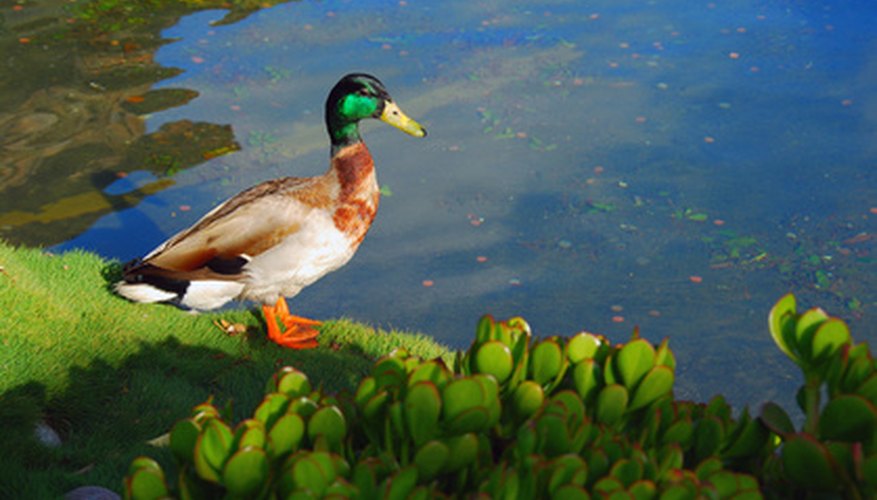A pond liner is a flexible plastic liner laid over the interior of a pond to prevent the water from leaking into the ground, and to prevent the pond from becoming muddy. You can install mortar over a pond liner to add strength, then you can add rocks and decorative elements. Adding the mortar is a simple process, but it's important to keep the mortar wet during the curing process to prevent cracking. Always wear a dust mask, eye protection and work gloves when working with mortar.
- A pond liner is a flexible plastic liner laid over the interior of a pond to prevent the water from leaking into the ground, and to prevent the pond from becoming muddy.
- Adding the mortar is a simple process, but it's important to keep the mortar wet during the curing process to prevent cracking.
Mix the mortar using three parts sand to one part plastic cement. Add 1½ parts of concrete reinforcement for stability. Mix the ingredients in a large container. Add enough water to create a mud-like paste.
Spread the mortar over the liner with a flat trowel. Spread the cement to a thickness of about 1 inch.
Press large rocks into the mortar to create borders and shelves for plants or fish. Press the rocks around the edges of the mortar to hold them in place. Spread a thin layer of mortar between the rocks for additional bonding and to create a watertight seal between the rocks.
- Spread the mortar over the liner with a flat trowel.
- Press large rocks into the mortar to create borders and shelves for plants or fish.
Water the surface of the mortar every hour. The cement must remain damp throughout the entire curing process or it will crack.
Seal the mortar with a cement sealer. Apply the sealer with a paintbrush. Allow the sealer to dry for 24 hours.
Fill the pond with water as soon as the concrete sealer dries. This is the best way to maintain the strength of the cement inside the pond.
TIP
If desired, you can increase the thickness of the mortar up to 3 or 4 inches thick.
